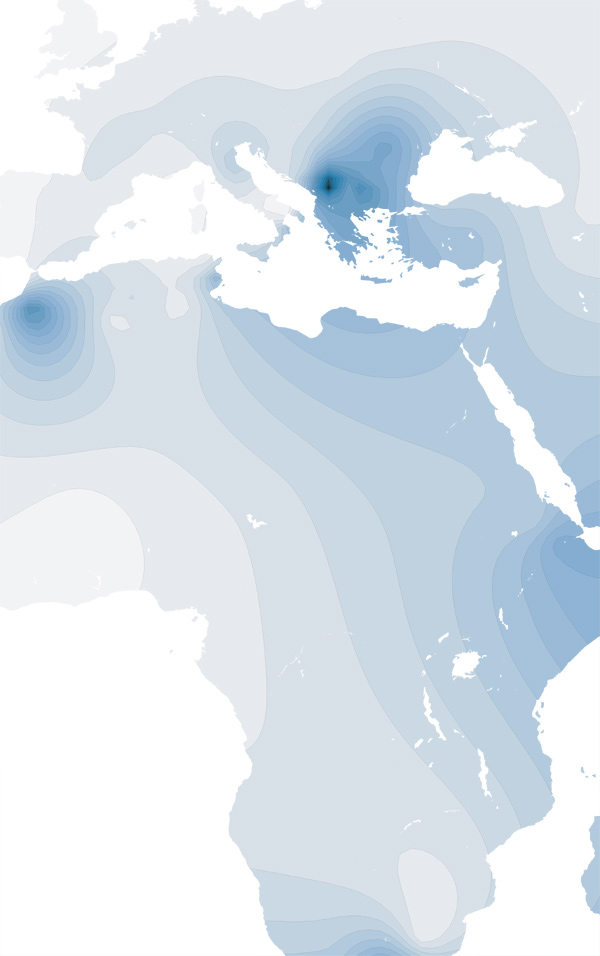| Y-chromosome Haplogroups |
In addition to your Y-chromosome STR results, we are able to accurately predict which "haplogroup" your Y-chromosome belongs to. Haplogroups can be thought of as branches of the Y-chromosome genetic tree. With its roots in Africa approx. 140,000 years ago, as time has progressed, small mutations have occurred on the Y-chromosome. When a mutation happens (called a SNP, pronounced "snip"), the tree branches so that over time and as people have migrated into different continents and regions, we see a tree-like structure with branches found in certain parts of the world.
Because particular STR patterns are seen within particular haplogroups, on most occasions we can predict which haplogroup you are in and where your Y-chromosome fits into this Y-chromosome tree. Along with the prediction, we also provide the history, background and mapped distribution of your haplogroup.
Please be aware that, whilst our comparative database uses up to date information, it may not be possible to make an accurate prediction on all occasions and sometimes no prediction can be made.
| Your Predicted Haplogroup: E3b |
Haplogroup E is defined by the equivalent mutations of M96, SRY4064 and P29. This haplogroup has split into three major clades, E1, E2 and E3. Two of the three branches of haplogroup E, the major clades E1 and E2, have been observed almost exclusively on the African continent but at low frequencies. The third branch, the E3 clade (defined by the SNP marker P2), is seen both within Africa and outside in Europe and western Asia. As it is the only haplogroup to be seen both inside and outside of Africa, it is evidence of the "out-of-Africa" theory where a likely small group of modern humans within Haplogroup E3 crossed from Africa into the Near East approximately 75-80,000 years ago. Early research carried the theory that E3b (defined by M35 and M215) was spread by the expansion of farmers though the Neolithic period however more detailed studies reveal a more complex picture of migration events beginning approx. 25,000 years ago in East Africa. E3b can be split up into further branches each with their own histories; E3b1 is seen in Eastern Africa, Northern Africa, the Near East and Europe - it is the most common group within Europe found around the Mediterranean. E3b2 is most common in north-western Africa approaching frequencies of 80% and has been associated with the Moors in Iberia. E3b3 probably originated in the Near East but is now most common in Ethiopia.
| Distribution of Haplogroup E3b |
